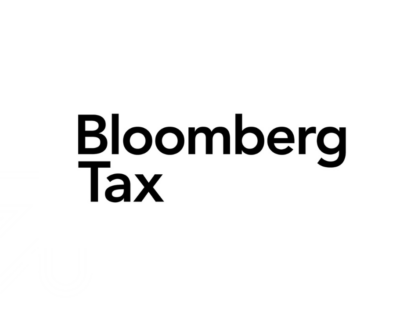Introduction: A New Era of Transfer Pricing Oversight
Transfer pricing has long been one of the most complex areas of corporate taxation, sitting at the intersection of tax law, economics, and corporate governance. In Romania, the topic has become even more pressing in 2025, following the National Agency for Fiscal Administration’s (ANAF) launch of an unprecedented data collection campaign targeting intercompany transactions over a five-year period. This initiative underscores a shift away from case-by-case audits toward a broader, systemic, and data-driven approach to identifying transfer pricing risks. For companies operating in Romania, the consequences are clear: documentation must be stronger, analyses more robust, and tax risk management more proactive than ever before.
The Scope of ANAF’s Data Collection
In July 2025, ANAF initiated a large-scale project requiring more than 2,700 medium and large taxpayers to provide detailed information on related-party transactions carried out between 2020 and 2024. The focus is clear: inbound service charges, royalties, and intercompany financing. These categories represent the most frequently disputed areas in Romanian transfer pricing audits, and ANAF is now seeking to benchmark these systematically across industries.
Unlike previous years, when transfer pricing audits were based largely on individual taxpayer files and inspector judgment, the new approach leverages aggregate data. By pooling information from thousands of taxpayers, ANAF can more easily identify patterns, outliers, and potential profit-shifting arrangements. For example, if a Romanian subsidiary consistently claims high service charges without sufficient evidence of benefit, ANAF can quickly compare this with data from similar companies and challenge the deduction.
Why Services, Royalties, and Financing Are in the Spotlight
ANAF’s focus is not accidental. These three types of transactions are inherently difficult to price, and they have historically been a source of tax controversy worldwide.
Intra-group services often face questions about whether they actually provide economic benefit to the local Romanian recipient. Tax authorities may argue that services are duplicative, shareholder in nature, or inflated in cost. Without clear documentation, companies risk adjustments that disallow the intercompany charges in their entirety.
Royalties for the use of intellectual property (IP) are another high-risk area. Determining an arm’s-length royalty rate is highly fact-specific and depends on factors such as the uniqueness of the IP, the market’s willingness to pay, and industry norms. Authorities often challenge royalties they perceive as excessive, particularly when the charges reduce the local taxable base.
Intercompany financing has come under heightened scrutiny since the OECD’s 2020 guidance on financial transactions. ANAF, like many tax authorities, is increasingly assessing whether a Romanian entity has the capacity to bear debt, whether implicit group support should reduce interest rates, and whether guarantee fees are justified.
While these three categories have drawn particular attention, all related-party transactions should be consistently documented and defended. Even seemingly routine dealings—such as purchases of goods, cost allocations, or management charges—can attract scrutiny if documentation is incomplete or inconsistent with the arm’s-length principle.
By concentrating on these areas, ANAF is positioning itself to maximize both efficiency and revenue collection from audits.
From Reactive Audits to Proactive Data-Driven Enforcement
The most significant change is not simply the breadth of data collection, but the methodology behind it. ANAF is moving toward data-driven enforcement, aligning with international trends in tax administration. Instead of relying solely on individual inspectors’ analyses, the authority can now employ comparative tools, analytics, and industry benchmarks to highlight inconsistencies.
For taxpayers, this means that audit risks will be identified more quickly and more objectively. Companies that fall outside the statistical norm for their sector may face targeted questions, regardless of whether their documentation complies formally with Romanian requirements. In practice, this reduces the effectiveness of “tick-the-box” compliance and requires taxpayers to think more strategically about how their transfer pricing story holds up against both the law and peer behaviour.
Practical Risks for Companies
The implications of ANAF’s new approach are far-reaching. Among the most immediate risks are:
- Greater likelihood of adjustments: Companies whose intercompany charges appear inconsistent with market norms could see adjustments disallowing deductions or recharacterizing income.
- Retroactive exposure: Because ANAF is collecting data for 2020–2024, taxpayers face potential exposure for past years where documentation may not meet today’s higher standards.
- Double taxation: Adjustments in Romania may not always be relieved in the counterparty jurisdiction, leading to unresolved double taxation. Furthermore, where there is an instance of double taxation, the process can take years to complete.
- Reputational risk: High-profile disputes with tax authorities can attract negative attention from both shareholders and the public.
These risks underline the need for robust proactive measures.
Preparing for ANAF’s Audits: What Companies Should Do Now
In light of this environment, Romanian entities should take immediate steps to strengthen their transfer pricing position. Key actions include:
- Enhancing documentation – Go beyond minimum statutory requirements. Ensure that functional analyses are detailed, benefit tests for services are documented, and financial benchmarks are tailored to the transaction.
- Testing intercompany arrangements – Proactively assess whether service charges, royalty rates, or financing terms align with what independent parties would agree to under current market conditions.
- Aligning contracts with practice – Ensure that intercompany agreements reflect actual conduct and that they are updated to reflect changes in business models, cost structures, or market conditions.
- Conducting risk reviews – Simulate how ANAF may interpret your company’s position relative to peer data. Identify exposures before the audit begins.
- Preparing for disputes – Develop a strategy for managing potential controversies, including escalation through appeals or mutual agreement procedures where relevant.
The Broader Context: Romania in the Global TP Landscape
Romania is not acting in isolation. Tax authorities around the world are enhancing their transfer pricing enforcement through data collection, cross-border cooperation, and reliance on OECD guidance. However, Romania’s proactive stance in 2025 signals its determination to protect the local tax base more aggressively. This aligns with the broader global push for transparency and fair taxation but places Romanian subsidiaries of multinational groups in the spotlight.
Companies must recognize that ANAF’s expectations are rising in line with this global trend. The margin for error is narrowing, and companies that fail to adapt may face costly adjustments and disputes.
From Compliance to Strategy
For businesses operating in Romania, 2025 is a turning point in transfer pricing. ANAF’s data-driven audits represent a new chapter in tax enforcement, one that leaves little room for superficial compliance. Companies can no longer rely on standard templates or outdated benchmarks; they must engage in substantive, proactive management of their transfer pricing policies.
The challenge is significant, but so is the opportunity. By strengthening documentation, aligning practices with economic reality, and anticipating audit scrutiny, companies can reduce risk and demonstrate transparency. In doing so, they not only protect themselves from adjustments but also build stronger, more defensible transfer pricing strategies that support long-term business stability.
Transfer pricing in Romania has entered a new era. Those who prepare now will be the ones best equipped to navigate the challenges ahead.









